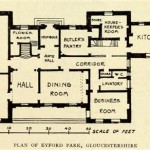Floor Plans for Real Estate: Essential Tools for Buyers, Sellers, and Agents
Whether you're buying, selling, or showcasing a home, floor plans serve as indispensable tools that provide a comprehensive visual representation of the property's layout, space distribution, and features. They enable buyers to make informed decisions about the suitability of a property, sellers to effectively market their homes, and agents to efficiently present the property's strengths and potential.
Benefits of Floor Plans for Buyers:
- Accurate Visualization: Floor plans offer a detailed layout of the home, eliminating any confusion or misinterpretations that may arise from verbal descriptions or photographs alone.
- Space Planning: Buyers can assess the size, shape, and flow of each room, enabling them to plan furniture placement and envision the property's functionality.
- Identification of Features: Floor plans clearly show the location of windows, doors, closets, utilities, and other features, providing a comprehensive overview of the home's amenities.
Benefits of Floor Plans for Sellers:
- Showcase Property Value: Floor plans highlight the home's layout and interior design, attracting potential buyers with a clear and concise representation of the property's features.
- Enhance Property Marketing: Floor plans can be included in online listings, marketing materials, and property brochures, providing buyers with a comprehensive and immersive experience of the home.
- Facilitate Virtual Showings: In a competitive real estate market, floor plans allow potential buyers to virtually explore the home before scheduling a physical visit, saving time and effort for both parties.
Benefits of Floor Plans for Real Estate Agents:
- Professional Presentation: Floor plans demonstrate the agent's professionalism and attention to detail, enhancing their credibility with potential clients.
- Streamlined Property Searches: Floor plans make it easier for agents to match buyers with suitable homes based on their specific needs and preferences.
- Negotiation Advantage: Armed with accurate floor plans, agents can provide informed guidance during negotiations, ensuring that their clients make well-informed decisions about the property.
Types of Floor Plans:
Various types of floor plans cater to different purposes:
- Architectural Floor Plans: Detailed blueprints used by architects and builders during the construction phase.
- As-Built Floor Plans: Accurate representations of an existing property, showing its current layout.
- Marketing Floor Plans: Simplified and visually appealing plans designed to highlight a property's features for marketing.
Creating Accurate Floor Plans:
Precise floor plans are crucial. To ensure accuracy, consider the following tips:
- Take Accurate Measurements: Use a laser measuring device or measure twice to minimize errors.
- Draw to Scale: Ensure that the floor plan accurately reflects the dimensions of the property.
- Include Details: Mark windows, doors, closets, appliances, and any other significant features.
Floor plans are indispensable tools for anyone involved in real estate. They provide invaluable insights into a property's layout, features, and potential. By utilizing floor plans effectively, buyers, sellers, and agents can enhance their real estate experiences and make informed decisions.

Why Are Floor Plans Not Used In Real Estate Marketing Mr Williamsburg

Real Estate Floor Plans And Site Photographer

Floor Plans For Melbourne Real Estate Marketing Maison Snap

Real Estate Photographer

How 3d Floor Plans Can Help In Real Estate Property Marketing

Real Estate Floor Plans Brisbane Realscope Marketing

Floor Plans For Melbourne Real Estate Marketing Maison Snap

Real Estate Floor And Site Plan Development Services Ascendix

Marketing Real Estate 2d Or 3d Floor Plans Elevations Service

Real Estate House Plans How To Use Them Boost Property S








